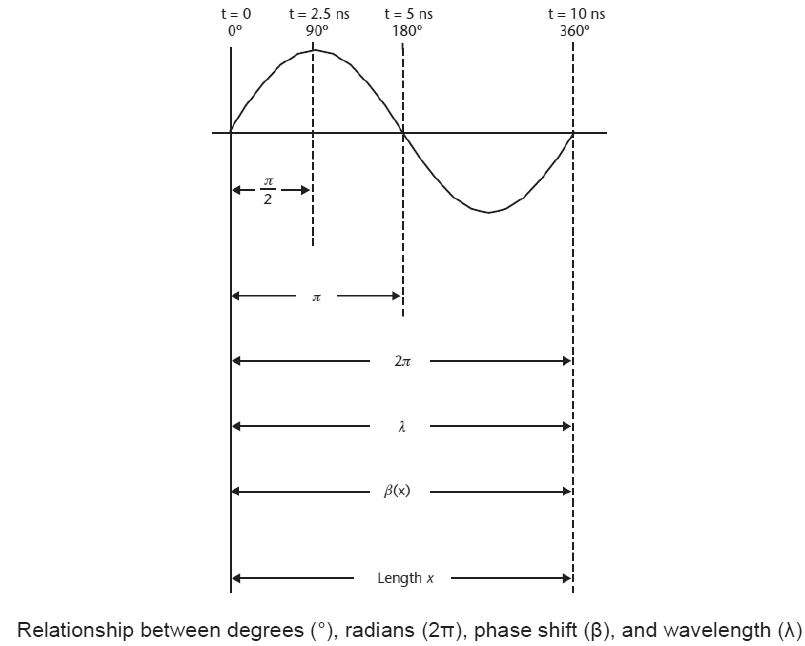what role does the phase scan angle play in phased array?
First, I am still not sure what phased means? Does it mean exciting the different port sources in the array at different times in a row, i.e. not at the same time?
I understand that phasing help direct the beam in a certain direction, but don't understand exact mechanics of how it achieves that.
Also, in HFSS, I go to edit sources and change the offset angle to 45 degrees between each of the sources, but I am not sure exactly how to choose the correct phase angle? is their a formula for that?
In general phased-controlled arrays exist in mechanical, acoustic, optical and electro-magnetic energy.
For RF, they can be passive (time delay) or active, used to control, time, spacial or frequency multiplexing or any combination of the above.
A 45deg phase is a time delay of λ/8 with coax cable or some other method.
Time delay depends on frequency of interest, can be stripline, coax cable, all-pass filter (LC) or digitally tuned transmitter with incremental control on time delay per end-user per location, per channel for improving reception in sparse regions. All radios AM,FM Cell phone use different methods.
It can be used to tune the null of the antennae in 1D, 2D or 3D. It can be used to block out spacial interference or prevent interference with co-channel antenna regions. It can be used with broadside 2D dispersion or end-emission control depending on combinations of partial wavelength spacings between antenna. e.g. <= 0.4λ equal space or 0.5, 0.75, 1 spaced etc. to create nulls in different angles so that efficiency is close to maximum (100%) in the desired formed beam.. You may search Beamformer antenna or consider http://www.orbanmicrowave.com/The_Ba...nna_Arrays.pdf
http://en.wikipedia.org/wiki/Space-d...ultiple_access
http://en.wikipedia.org/wiki/Beamfor...ing_techniques
Thank you for your reply. Now I have better understanding of time delay, but I still don't know what phase angle to use on my 5-element dipole array to achieve max power accepted into antenna and radiated, as well. By the way, I failed to mention that I use the active input impedance on each of the ports calculated by HFSS Active Z parameter.
Thanks.
---------- Post added at 22:26 ---------- Previous post was at 22:12 ----------
One more question: Does the phase angle need to match the distance between the array elements? So, if distance is λ/8, then phase angle need to be λ/8? What if the elements have variable distance between them?
Thanks.
Relationship between phase shift and delay:

You should use 0° if you do not want to tilt the beam direction.
For the phased array basics, have a look here:
http://www.radartutorial.eu/06.antennas/an14.en.html
This also shows an animated picture of the wave propagation from the antenna at different phase.
So the phase angle needs to match the distance between the array elements. Please confirm. I want to be 100% sure.
Thanks.
No, that is wrong.
What is the correct way then? It can be any angle?
In most cases, the phase angle is 0°, so that all antennas are in phase.
You would use a phase offset only for electronic beamforming (phased array).
I understand that and I do want to use a phased array, but I am not sure what determines what phase angle I use. Do I just phase it with any angle I choose 45, 90, 180, etc... or there is a reason when to use 45 vs 90 vs 180 degrees?
Thanks.
Do you read the answers to your questions?
This is explained in the link in post #5.
also the links in my post #2 indicate some common uses of different spacings and phases of Phase Array antenna.
- Is it really "heating" used for beam scanning in Echodyne's radar?
- Automated scanning yagi uda antenna for TV by using micro controller.
- Scan Angle vs active reflection graph for microstrip phased array in HFSS
- What is the meaning of beam-forming vs. beam-scanning?
- what is ideal scan angle for phased array?
- effect of scan angle in phased array?
